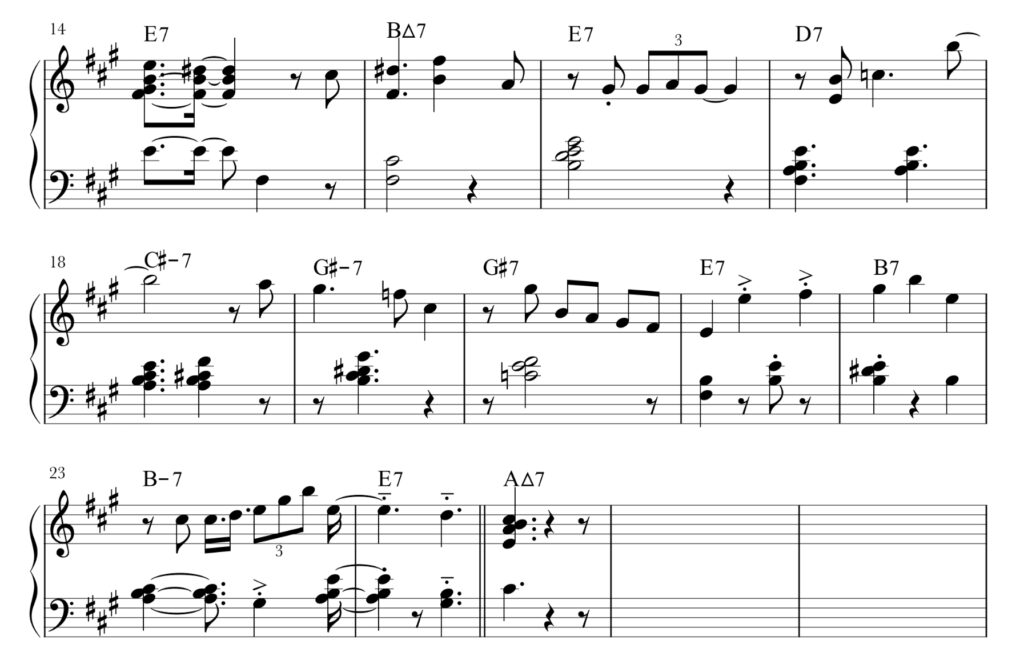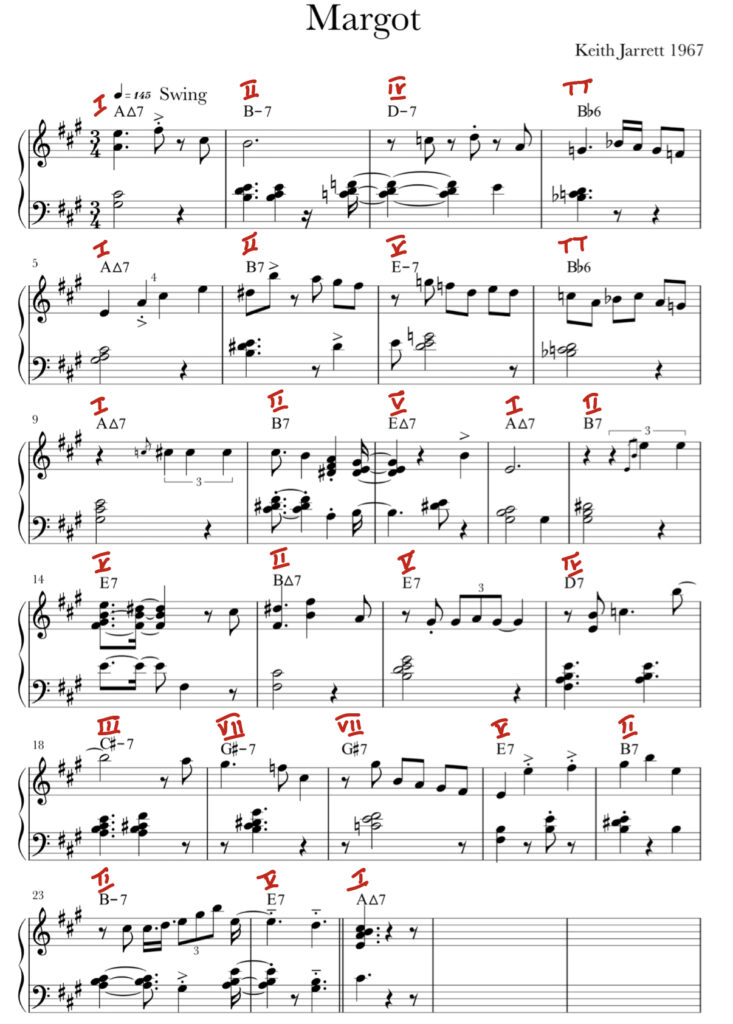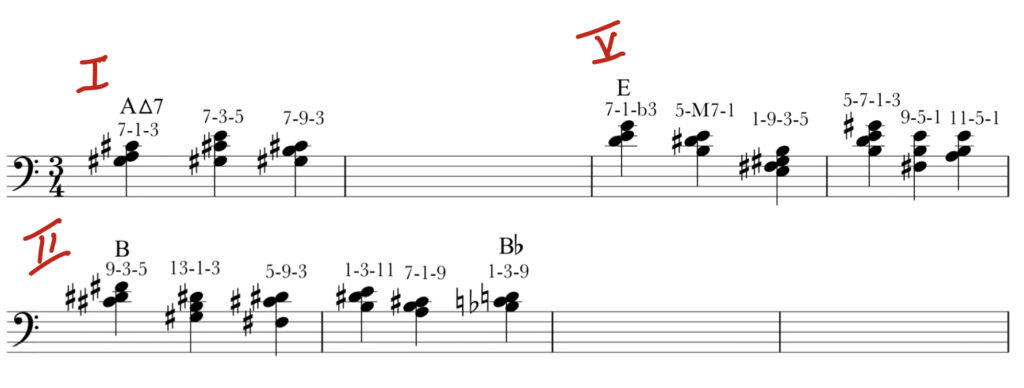Keith Jarrett - 1967
Keith Jarrett’s ‘Margot’ is from his debut album, “Life Between the Exit Signs”. It is a great example of how “Indeterminate Chords” work.


‘Margot’ is built on a fairly traditional, Destionational Tonality (Example 1). The only thing a little unusual is replacing the V chord with Tritone Substitutes (TT) and VII chords sometimes.
What sets the piece apart is the chord voicings. When we discussed “Indeterminate Chords” (Link), we identified three types popular among Jazz musicians: (1) intentionally non-directional, non-tertian chords, (2) 1-3-7 chords and (3) 1-3-7 shells. For the most part, Jarrett uses 1-3-7 and 1-3-7 shells here.
Bill Evans first popularized these voicings on albums like “Portrait in Jazz” from 1960. Jarrett and others from his generation would soon make this style synonyms with the “ECM sound” of the 1970’s.
The sound is bright and smooth. It suggests the harmony rather than stating it starkly. Jarrett skillfully picks voicings that colour the melody. 5th and 7th intervals are avoided and even the thirds are hidden a bit in little clusters. He also keeps the upper structure extensions mostly diatonic, avoiding the harsher altered 9, 11 and 13s.

Example 2 shows some of the voicings Jarrett employs on the I, V and II chords. This gives the player many options when improvising but the trick is knowing what colour each voicing offers. If you focus on the bass note of each chord, grabbing the little clusters can become quite intuitive. Remember major seconds and thirds will sound smooth and bright while minor seconds will add some bite.

